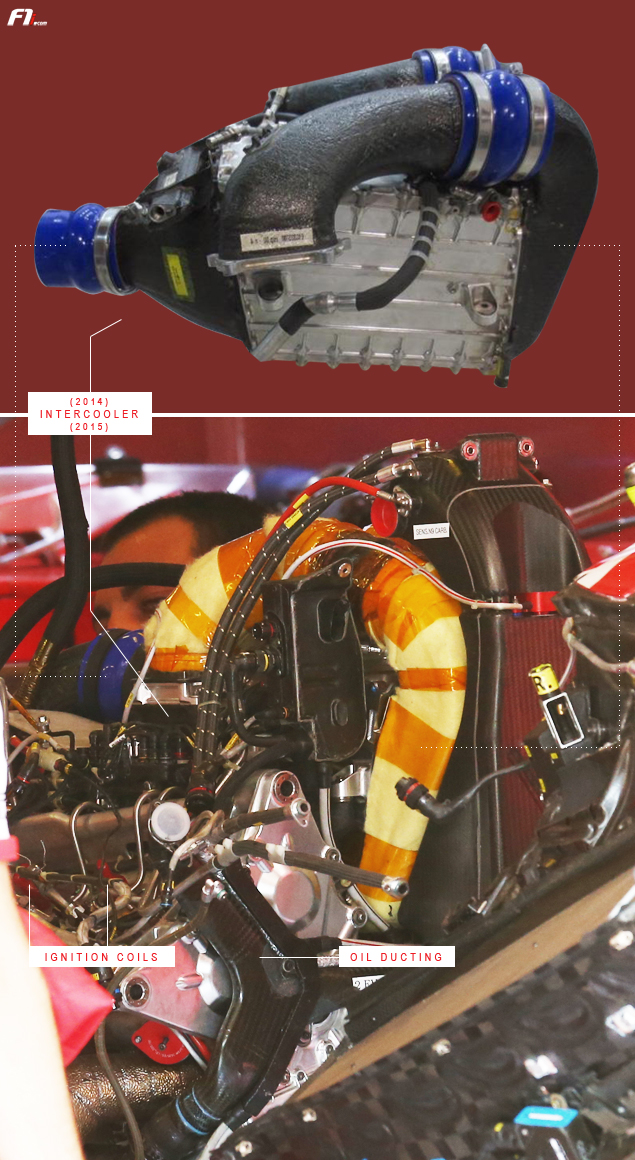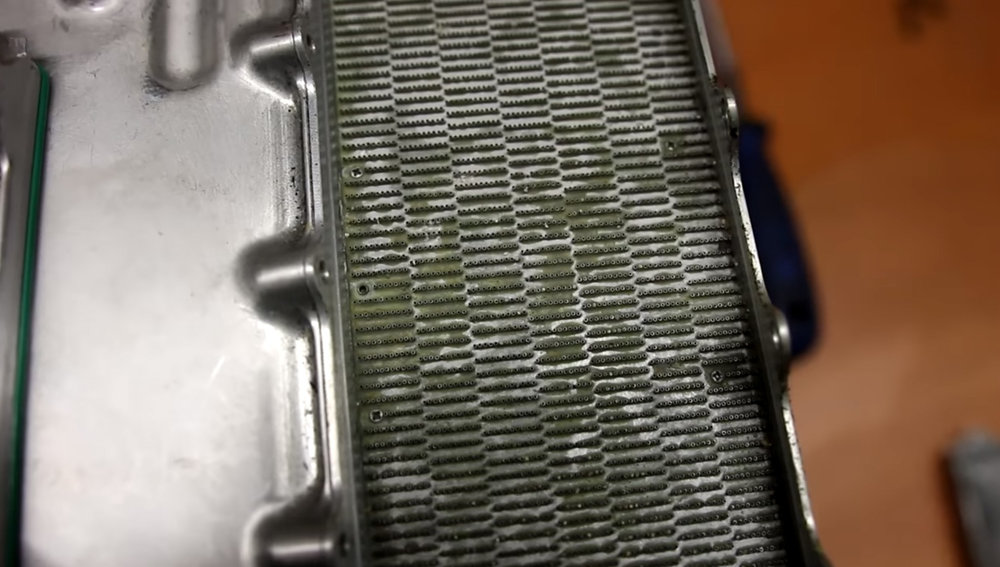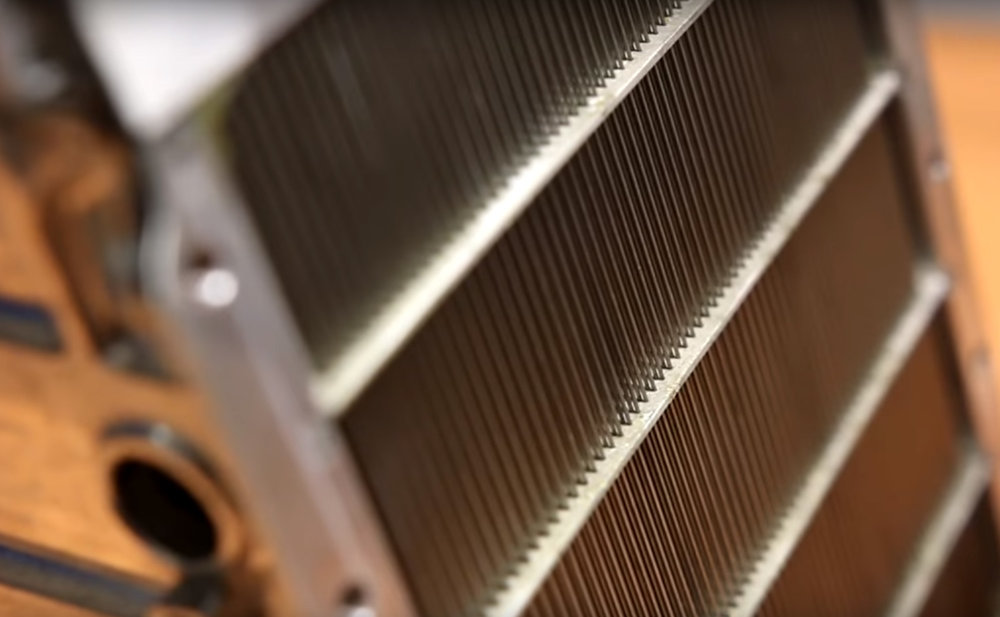The exhaust manifolds have probably yielded which is why they don't quite line up. Sometimes though they are designed with a bit of misalignment (too little to tell by just looking at it) such that tensile stresses are induced during installation to counter compressive thermal stresses at operating temperatures.
Primaries and secondaries are most likely hydroformed seam welded tubes made out of inconel 625 or 718. Flanges have normal flat gaskets as opposed to wills rings.
No way those bolts are titanium - they are definitely a nickel alloy, probably inconel too.
Interestingly I can't see a vee band clamp on the bellow - it looks as though it's welded at both ends. Presumably band clamps can't cope with the temperature.
Heatshield is a glass ceramic matrix reinforced with carbon fibre and covered in a reflective coating.
The cross he mentions is actually mandatory and is meant to stop any large chunks from flying out in case of a turbine failure. I think all the teams have it but it is not visible as it can be quite far up the pipe.
- Login or Register
No account yet? Sign up









